Mnemosyne and her daughters
“When you open people up, you find landscapes. When you open me up, you find beaches”.
Agnès Varda, The Beaches of Agnès, 2008.
Memory (collected, conserved, recovered) is the survival of a sensation, impression, or idea...Memories of what? Whose memory?
Through sculpture, installation, video, and performance, Julie Chaffort, Julie C.Fortier, Pascal Jounier Trémelo, Camille Llobet and Anaïs Wenger create conditions for exercising memory. Their work generates new modes of perception. It reflects a world view that integrates an awareness of life and the body, one that takes place in time as it unfolds, one that reactivates an image as tangible impression.
Julie C. Fortier’s approach is participatory, attempting to pass on a memory by providing a context and temporality for odors. In 2014, with La chasse, she began a series of installations in relief along venue walls. Placed at the level of the nose, 92,000 perfume odor cards are attached to the wall, taking the spectator on an olfactory adventure to the middle of a wet meadow, or within a warm fur with a hint of blood. Added to these mental images are layers of visual landscape that reveal the fur of a bear, or a snowy forest. In 2022, Fortier began working in the sensory and tactile medium of hand-tufted wool. The soft, warm, animal material absorbs odors, then diffuses them as we come into contact with it. With the work Attendu tendue, produced at a distinctive location for the Galerie du Dourven, in Côtes-d’Armor, Bretagne, the artist invites us to take a walk through an ancient mountain, between land and sea. After collecting what the land has to offer (lichen, bark, sea fennel, algae), and based on who she encounters, she writes a story in wool, asking us to slow down before our perceptions in order to become the landscape. In her performance Songe et souci she communicates a memory or anecdote, recreating it with the help of her olfactorium as the story is told. Each odor recalls a memory of a hike in the mountains or the home of a loved one. The reminiscences, elusive until named, activate mental images.
This appeal to the senses, creating a new type of interaction with the audience, is also at the heart of Anaïs Wenger’s work. As a creator of experiences, in 2018, she produced Uisge: a whiskey tasting accompanied by stories related to them. Somewhere between personal, historical, and geographical anecdote, a taste of grain, wood or peat takes us to Scotland and Ireland, while demonstrating the incapacity of each bottle to truly fulfill its touristic promise. Combining savors and savoir, the moment generates interactions between participants and awakens memory. Inspired by the world, Wenger creates events and public experiences. She became physically involved as a figure skater for three months in Étoile, 2019, and held an exhibition in the freight elevator of the contemporary art center of Geneva, every day at noon, for Les voyages de Saussure (2018). The situational nature of the artist’s performative approach engages the world through invitation and action. Many of her projects are rooted in music, both performances and rehearsals. In 2021, her installation A rose buds in a vase Leaf by Leaf…, traverses Puccini’s oeuvre through performances in several foreign countries. Plastic microphones placed on folding tables, placed flat on the ground, broadcast karaoke versions of these famous arias. The absence of performers for the scenes encourages the audience to write their own story. The work is both event and corporal experience taking place in the present.
Memory structures space, it reveals itself in images. Through language, gestures, and speech, Camille Llobet is interested in how the body and mind create habits and reflexes that found experience.
In her video Faire la musique (2017), she incites renowned athletes to mentally rehearse their performances. If imagining an action and carrying it out activate the same region of the brain, a gap remains between what happens in the mind and what we see. Hands move, faces twitch, breath gets heavier, muscles strain in small movements. Memory is revealed in an image and language builds memories. In Majelich (2018), the artist replays the babbling of her baby to an opera singer. For the video work Revers (2018), Llobet crosses a forest in the passenger seat of a car. Eyes-closed, she describes forms as they appear beneath her eyelids.
In Pacheû (2023), looking for the memory of mountains, the artist sets out on the tracks of different figures. Against a background of abrupt climate change, she records images and sounds from this changing scene, along with movements, pathways, and stories of professionals who travel the land. Across seasons, high mountain tops never appear, the focus is anchored to the middle to make room for paths walked, crushed snow, rockslides, rivers of water, pebbles formed, and the noise inside the glacier. The body is a living thing, a natural ally of communication. Within a sensory and fragile space, where moment meets duration, landscape dissolves into memory, and memory shapes space.
Julie Chaffort’s work appeals to deep or primitive memory, one that contains an immediate sensibility. To the slow rhythm of still shots, humans merge with life and the elements. Beyond language, the artist sounds the depths of the earth through breath, voice, music, and dance. In her video Printemps (2020), figures wander through a misty forest. On fire, they walk slowly through the trees, they embrace each other in flames. White smoke covers the ground and dissipates. Morne (2021) on the other hand, is a long sequence shot of a woman among vegetation at the foot of Mount Pelee. Anchored to the ground, slowly, eyes-closed, she dances and sings in the elements. The landscape disappears in the mist, the guttural sound of her voice fades, then light breaks and the sound becomes a scream. In 2022, with Sur la Terre Sur les Mers, the artist revisits her work, returning to previously unseen material from her oeuvre. Thunder rumbles in rhythm with string instruments, a song in acapella takes up in the wind, a horse rolls on the ground, a man begins a furious, diphonic song or bursts into flames in a lake…As if frozen in time, these figures connect to the earth and dance with the immaterial.
Combining architectural space with intimate, bodily space, Pascal Jounier Trémelo reveals the invisible hidden in forms, and the plenitude of voids, in his work with casts and impressions. Using the elasticity of materials, shapes transform to generate memorial fragments. They retain the imprint of the artist, fully dedicated, at work. For several years, Trémelo has been working directly with fabrics to create textured bodies. In Baliste Epilithe (2019), a pile of covered materials in a corner of his studio becomes the pretext for a cast. The unexpected event generates an envelope, a skin whose folds and interstices produce a drape. Its pink color is due to remnants of textile fiber. Whether due to the gravity that shapes it, event or accident, the work retains its process of elaboration, a memory of itself. In Calcrete Palustre, the artist uses a silicon mold from another work to which he adds terrycloth to reveal its reverse side. Thus altered, the form is further enhanced by a wooden base, giving it an architectural aura. The materials’ sedimentation and its perpetual inversions brought the artist to drawing, starting in 2021. After having taken samples of fissures on walks, and creating a wooden frame, he draws multiple lines on a page on a concrete table, creating an optical effect and adding texture to the drawing. The lines are then added to his organic, living artistic vocabulary.
These different artists initiate an exchange with the elements, inviting us to go beyond the distancing proper to notions of landscape in order to immerse ourselves in the world around us. These works appear as a layering of sedimentary images, vague memories with affective tones that blossom into images in the present. For thousands of years in the West, the body has been deprived of its worth in favor of mind. Nevertheless, it’s the body which anchors us to reality, through it we’re able to enter into contact with the world. It is our primary, phenomenal reality. The importance of story, the power of physicality, the manipulation of materials, elements, and senses brings these works into the density of the present and of the body, for sensory experiences.
I am the earth. I am fire. I am the mountain and the rock. I am the whole of matter and memory, here and now.
Translation: Elaine Krikorian
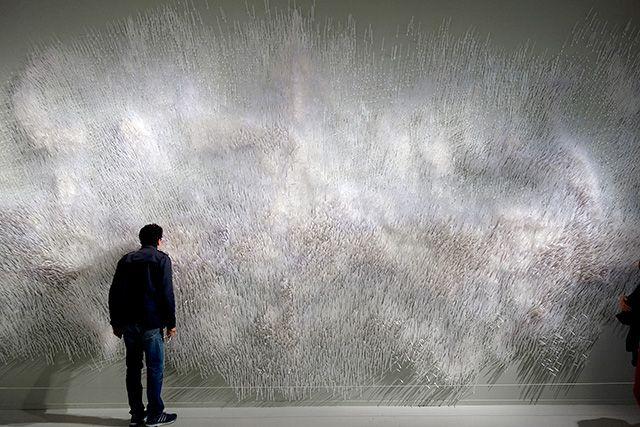
olfactory installation in situ, 92000 touches, 900 x 450 cm.
Views of the exhibition "Tu dois changer ta vie", Le Tripostal, in the framework of Renaissance de Lille 3000
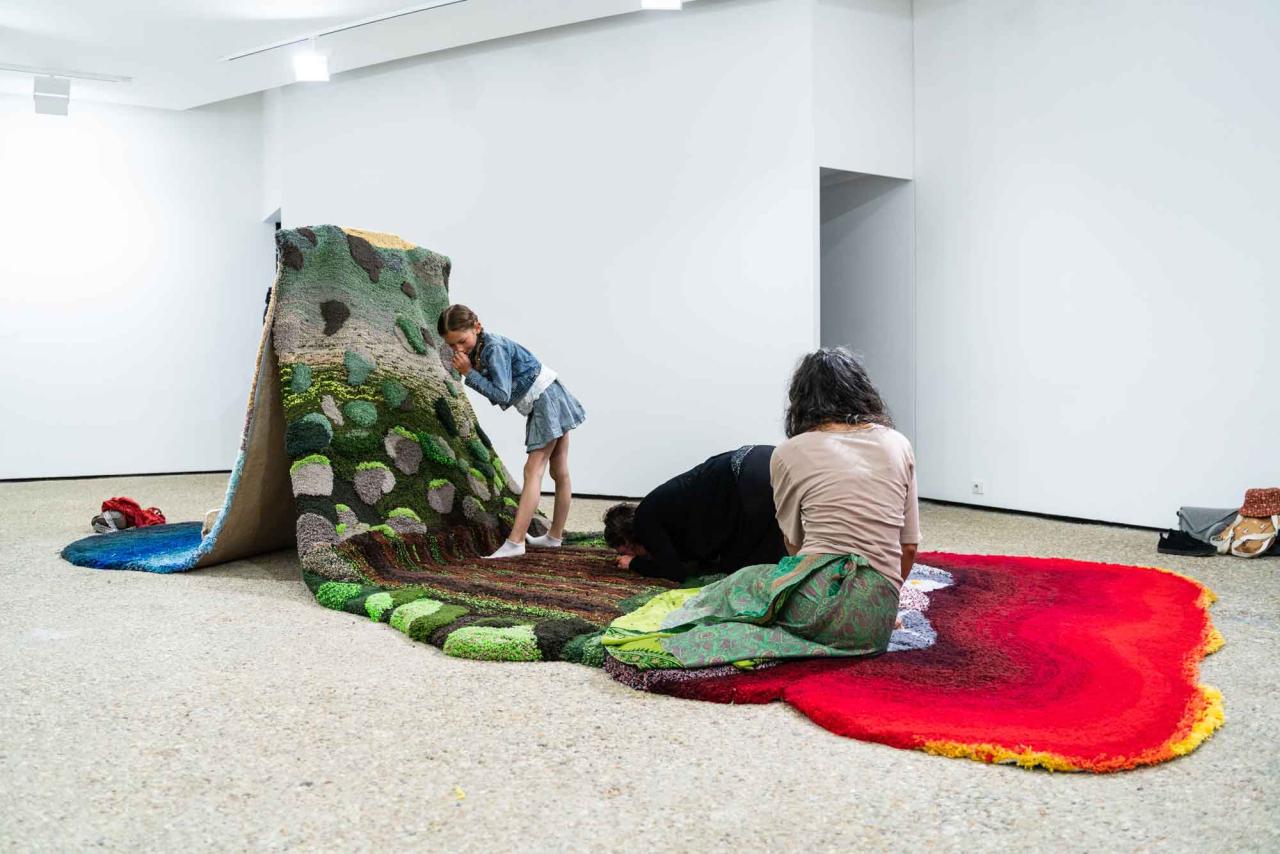
Olfactory installation, 2 perfumes, metal holder, calcite stone and quartz, hand-tufted wool carpet, 280 x 780 x 150 cm. View of the exhibition "Sentir le coeur de la montagne", La Galerie du Dourven.
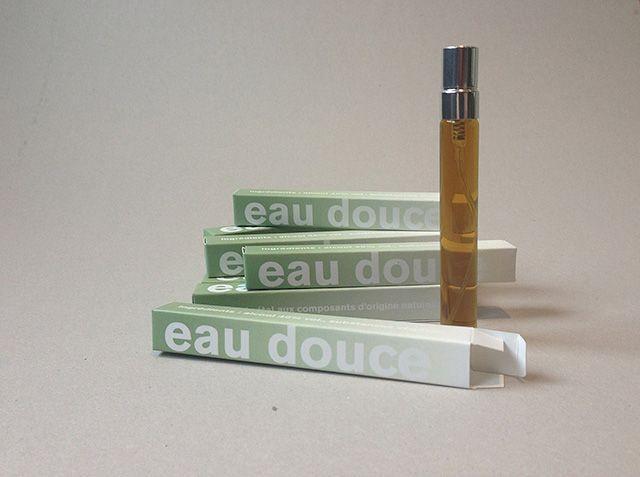
Olfactory performance realized as part of Walk, Camp, Float, perform the grounds, reveal the environments organized by think think think, Galerie Loire Nantes on May 28, 2016.
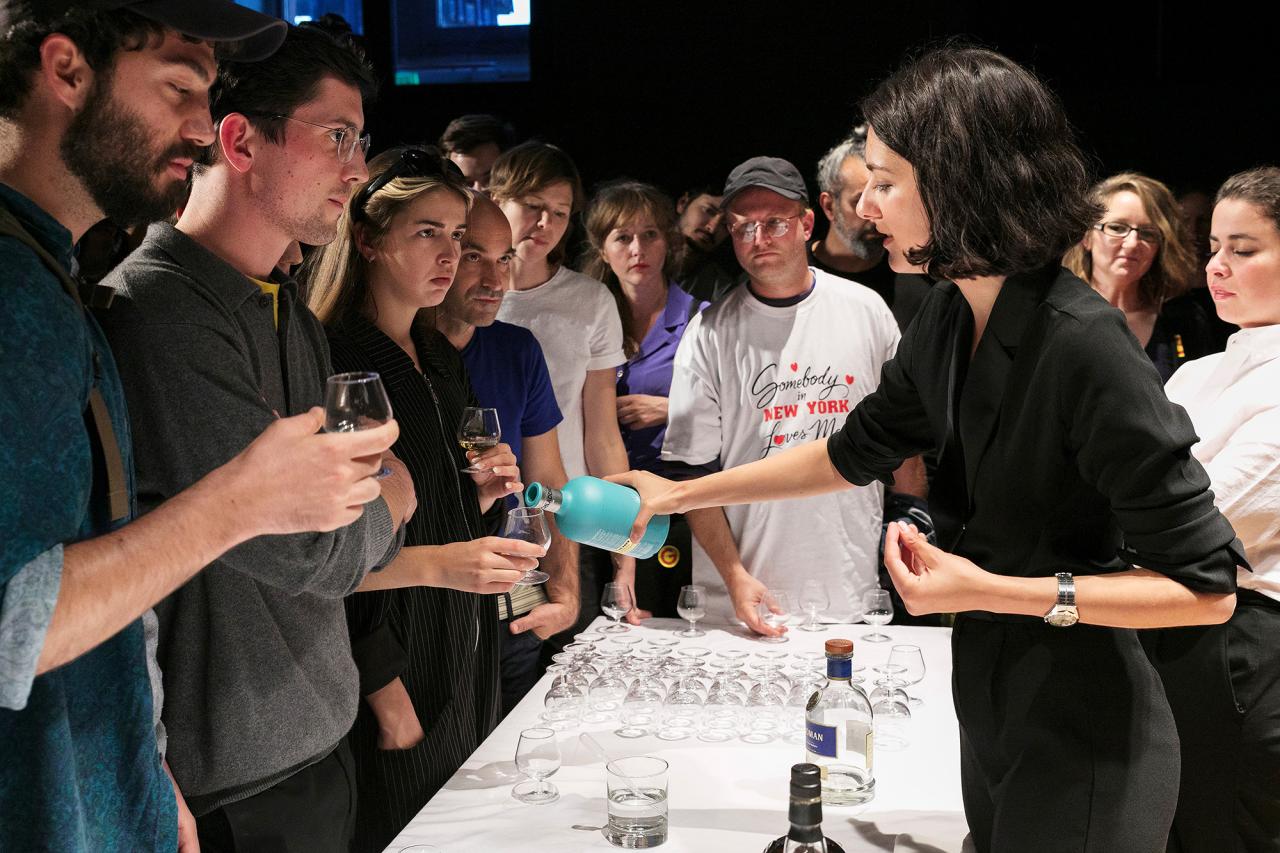
Swiss Performance Award. Photo: Emmanuelle Bayart.
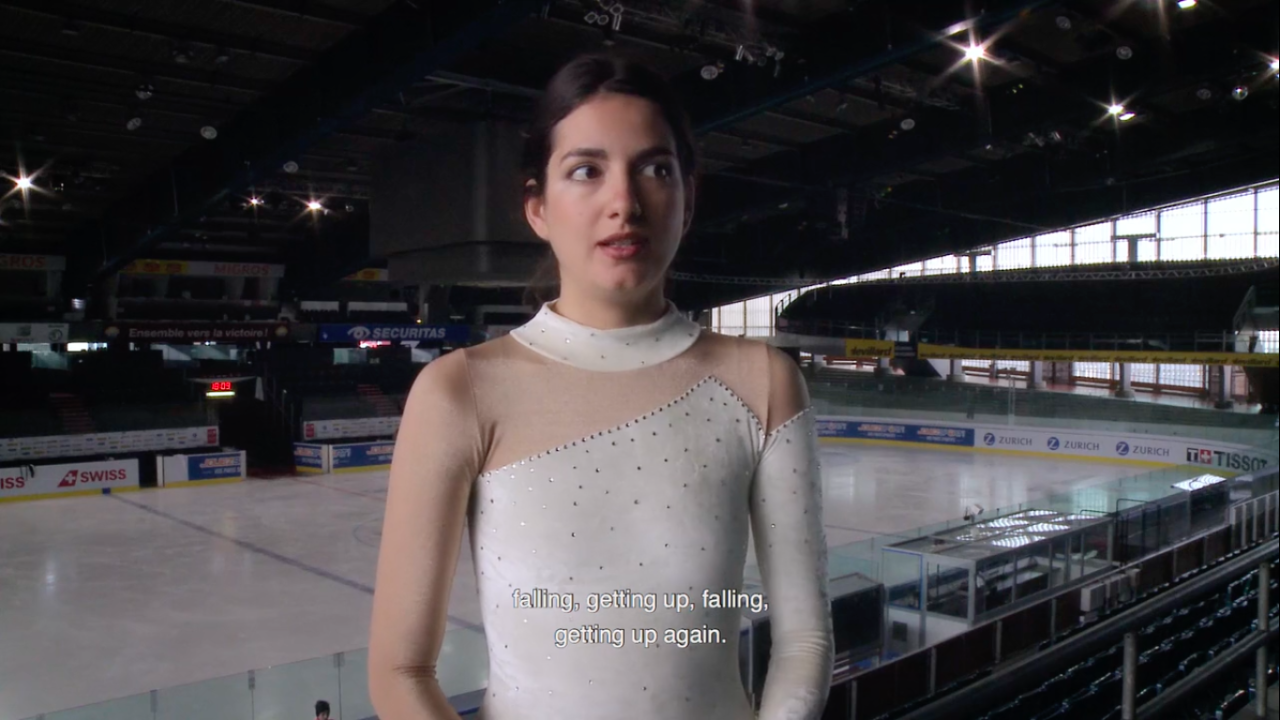
co-directed with Sayaka Mizuno and produced by Centre d'Art Contemporain de Genève after a residency at Project Space.
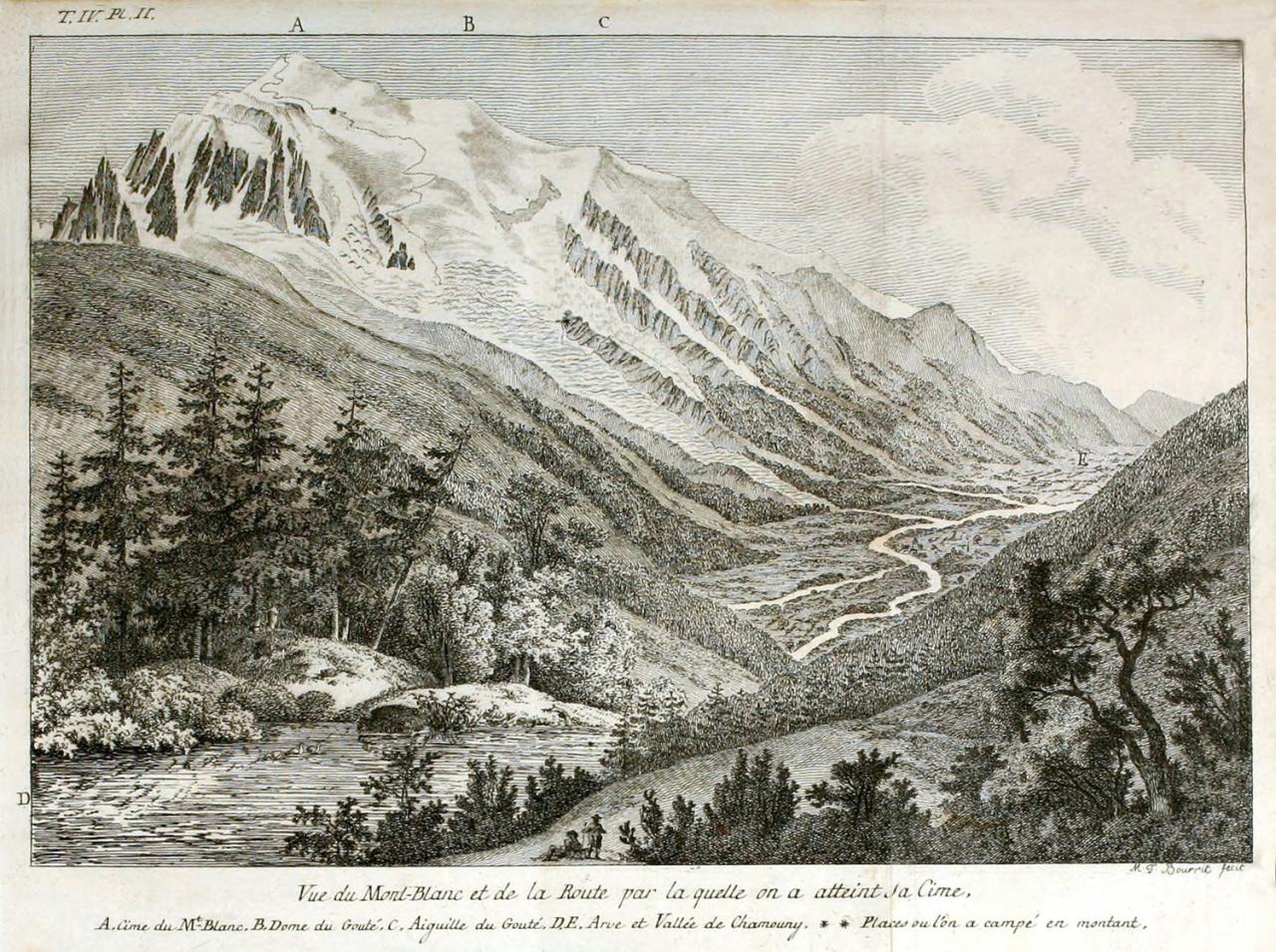
Loan of the library of the Geneva Science Museum for the exhibition of the Bourses pour la jeune création of the Berthoud, Lissignols-Chevallier and Galland funds.
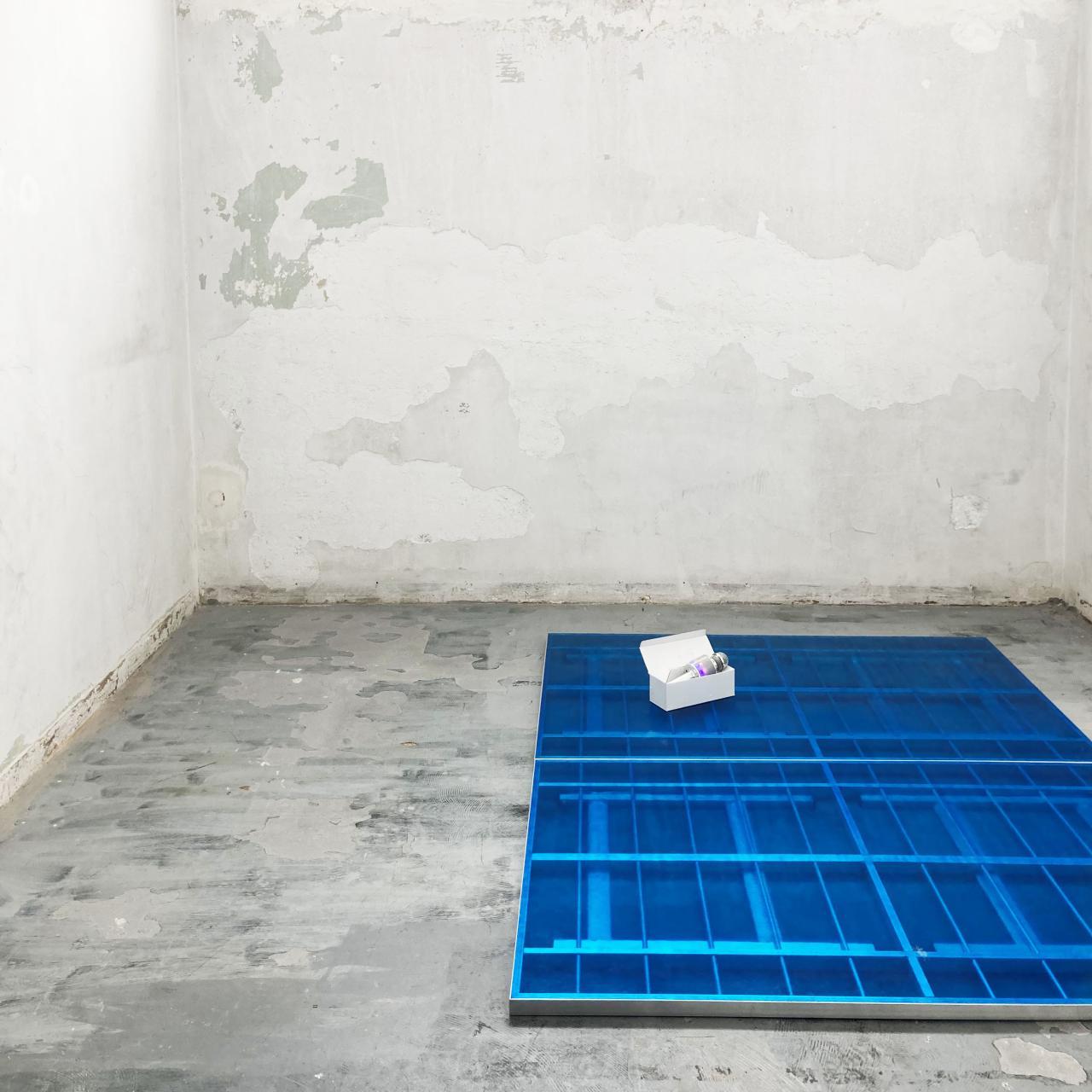
Detail of the group exhibition Ortense organized by Il Colorifico at the Fondazione ICA Milano.
Photos © Elena Radice
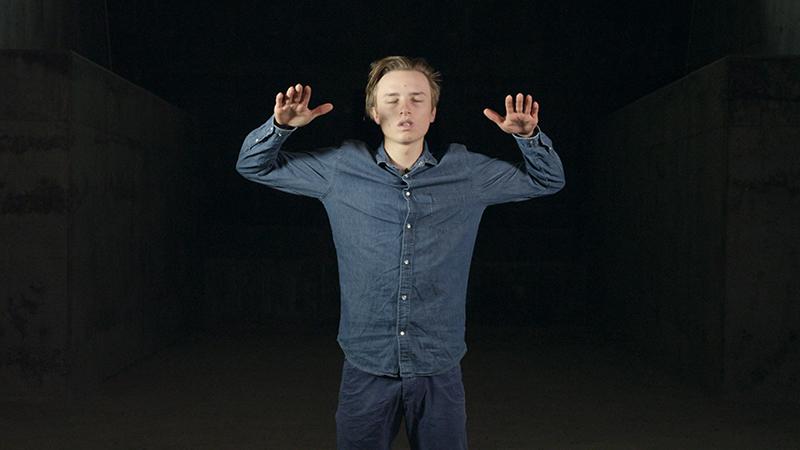
Video projection, 15'27, speakers, 4K video, stereo sound.
With Camille Cabrol, Mathieu Collet, Loïc Costerg, Vincent Descols, Romain Desgranges, Jérôme Grosset-Janin, Mathéo Jacquemoud, Anouck Jaubert, Oliver Marich, Marie Martinod, Lou Pallandre, Stéphane Pion, Thomas Roch-Dupland.
Production support: City of Thonon-les-Bains and City of Saint-Gervais-les-BainsCollection Institut d'art Contemporain, Villeurbanne/Rhône-Alpes
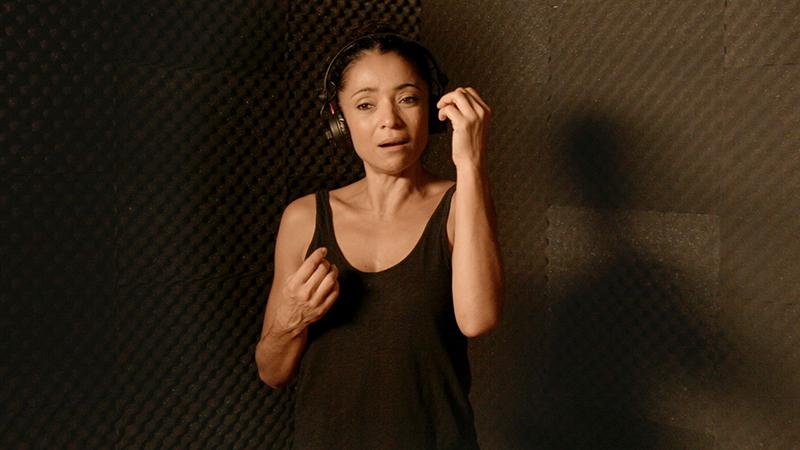
Soprano : Magali Léger Musician, sound engineer : Kerwin Rolland
Supported by the Fondation des Artistes, the Centre national des arts plastiques and the Printemps de Septembre.
Collection FRAC Grand Large, Hauts-de-France
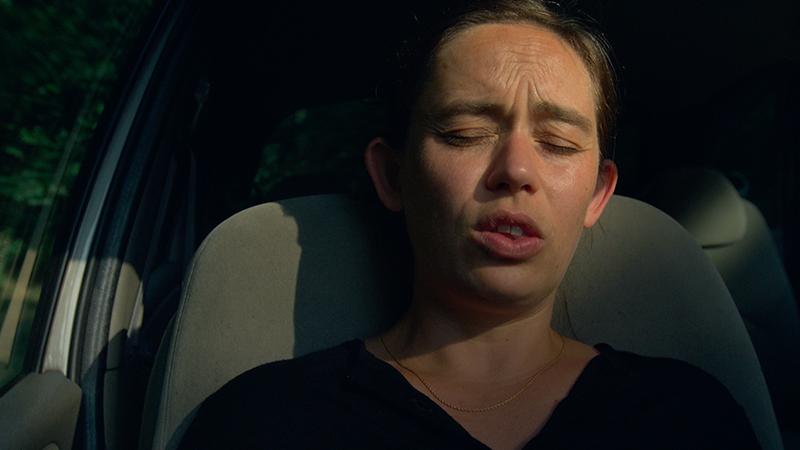
Video projection, 4K video, stereo sound, speakers, 6'50
Production assistance: Association Le Cyclop, Parc naturel régional du Gâtinais Français
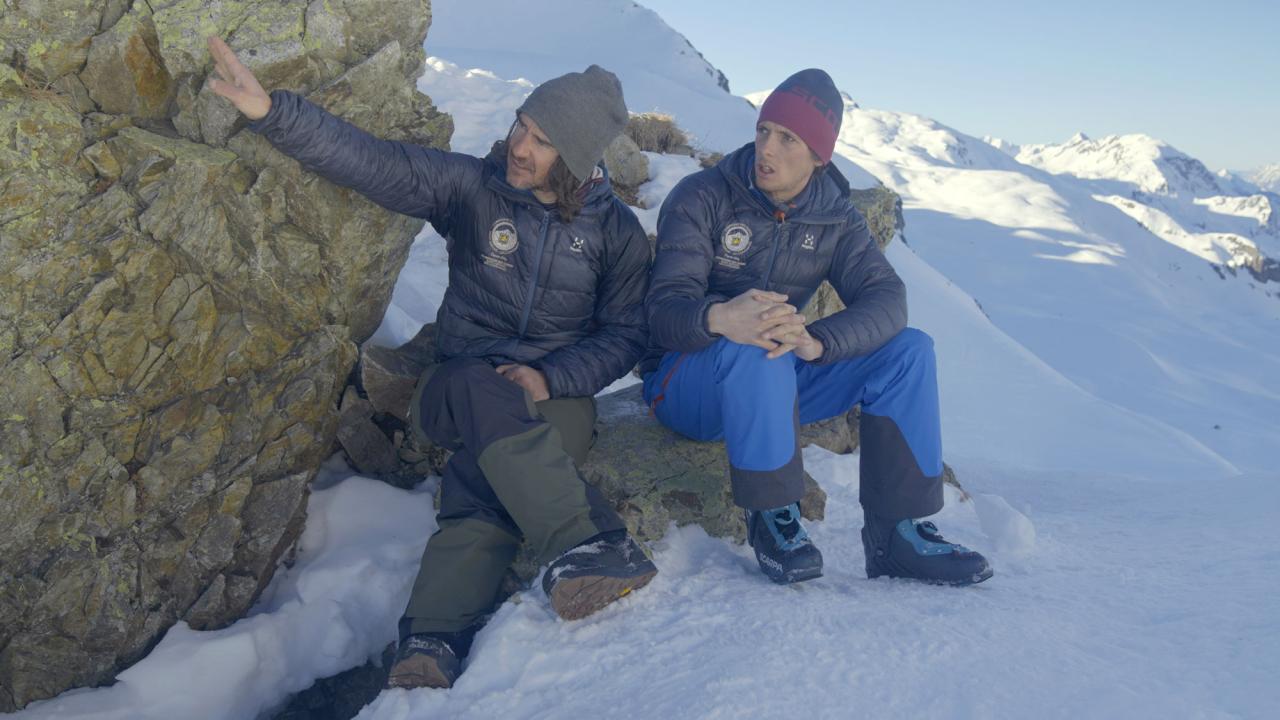
Edocumentary essay, feature, 4K video, 5.1 sound, approx. 60 min
Laurent Bibollet and Mathias Dunand, high mountain guides, Col de la Fenêtre, Mont-Blanc massif, rush, extract, still.
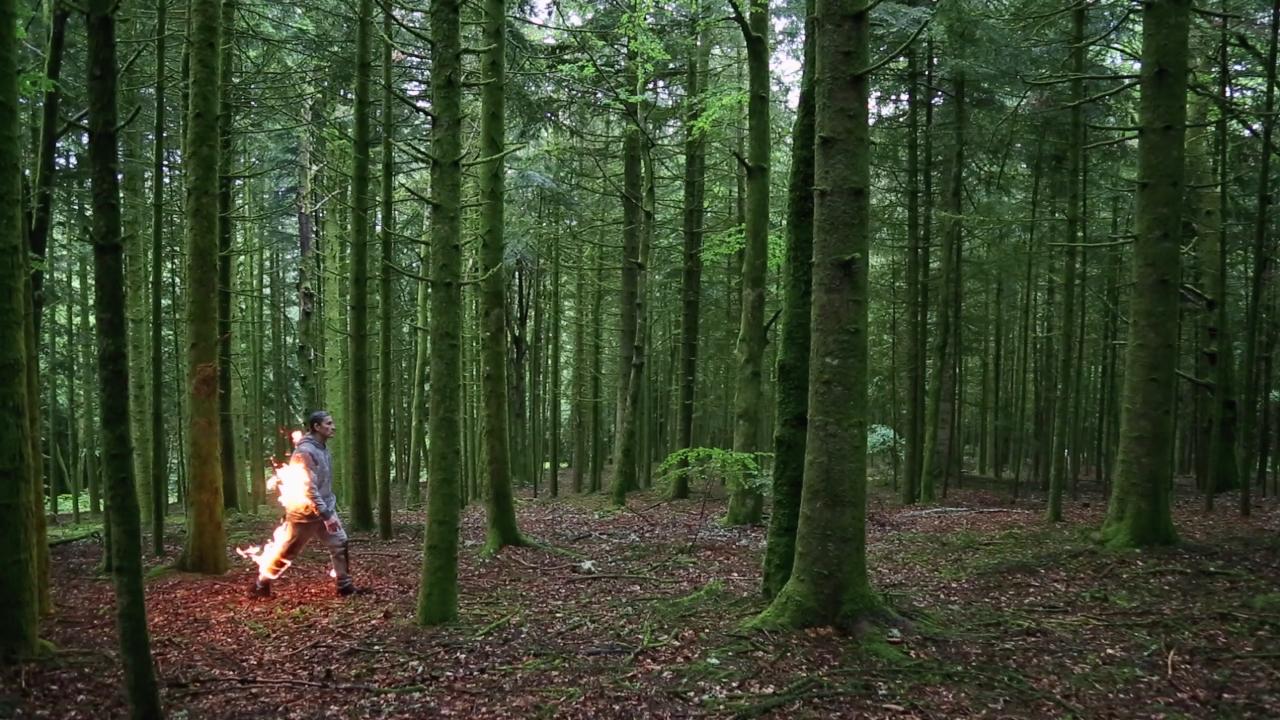
Video, 7,40 min, color, stereo sound, HD.
Production: Mécènes du Sud Montpellier-Sète, with the "support of an artistic research/production of the Centre national des arts plastiques" and the Centre International d'Art et du Paysage de Vassivière.
with Bénédicte Chevallereau and Jérome Henry.
Sound: Bart Velay
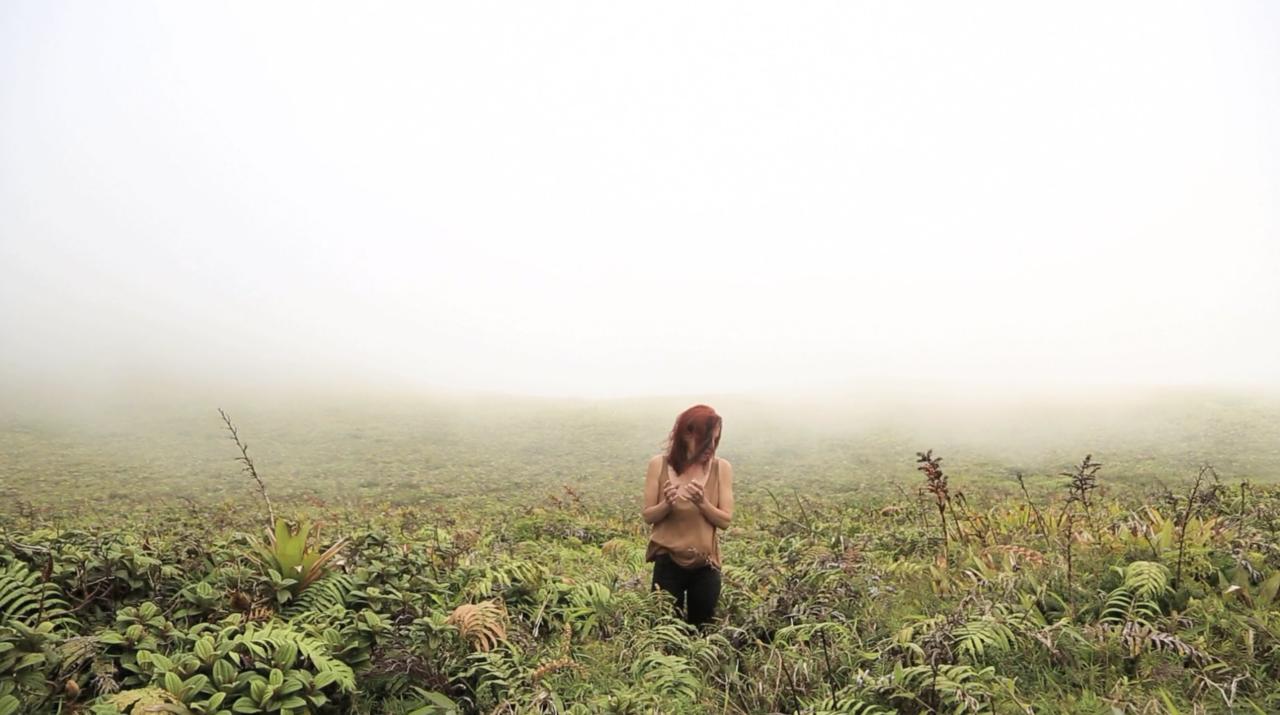
Video, 22 min, color, stereo sound, HD
Production: CNAP, Station Culturelle
with Isabelle Duthoit
collection FRAC Réunion
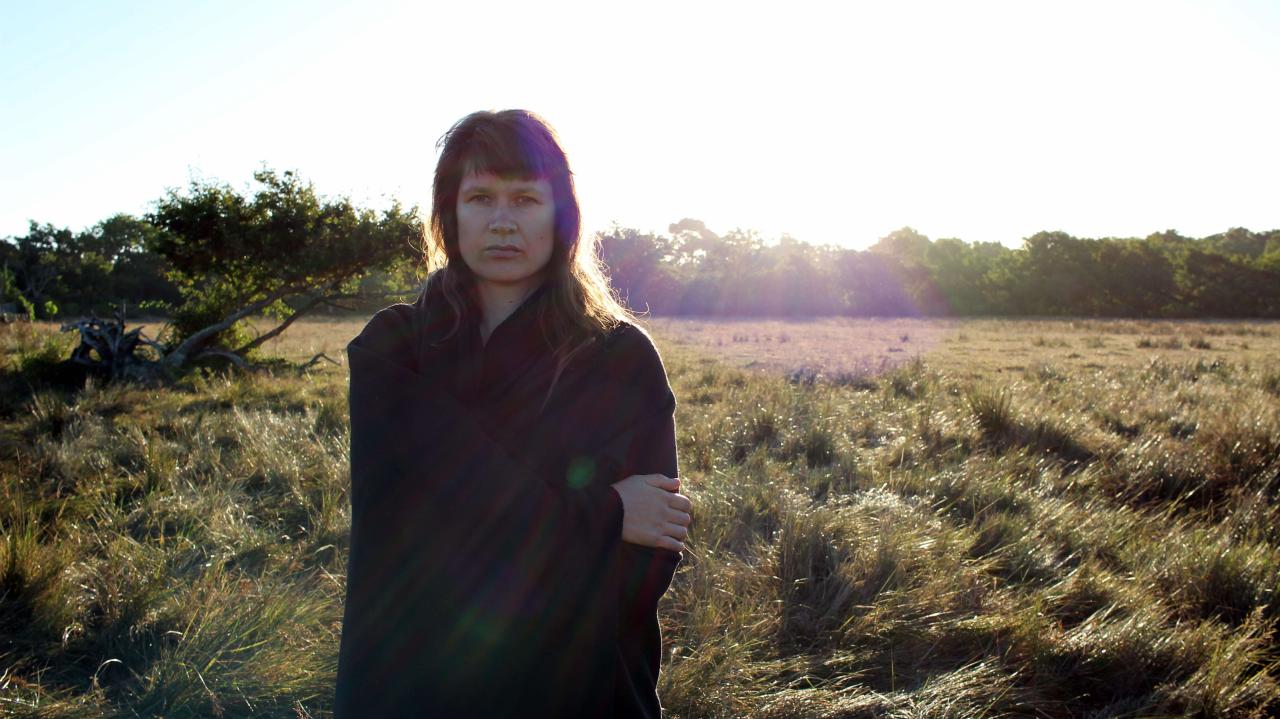
Video - 20min - 16/9 - HD - color - stereo sound
Financial support : The Cultural Agency of the Dordogne, Nuits des Temps festival
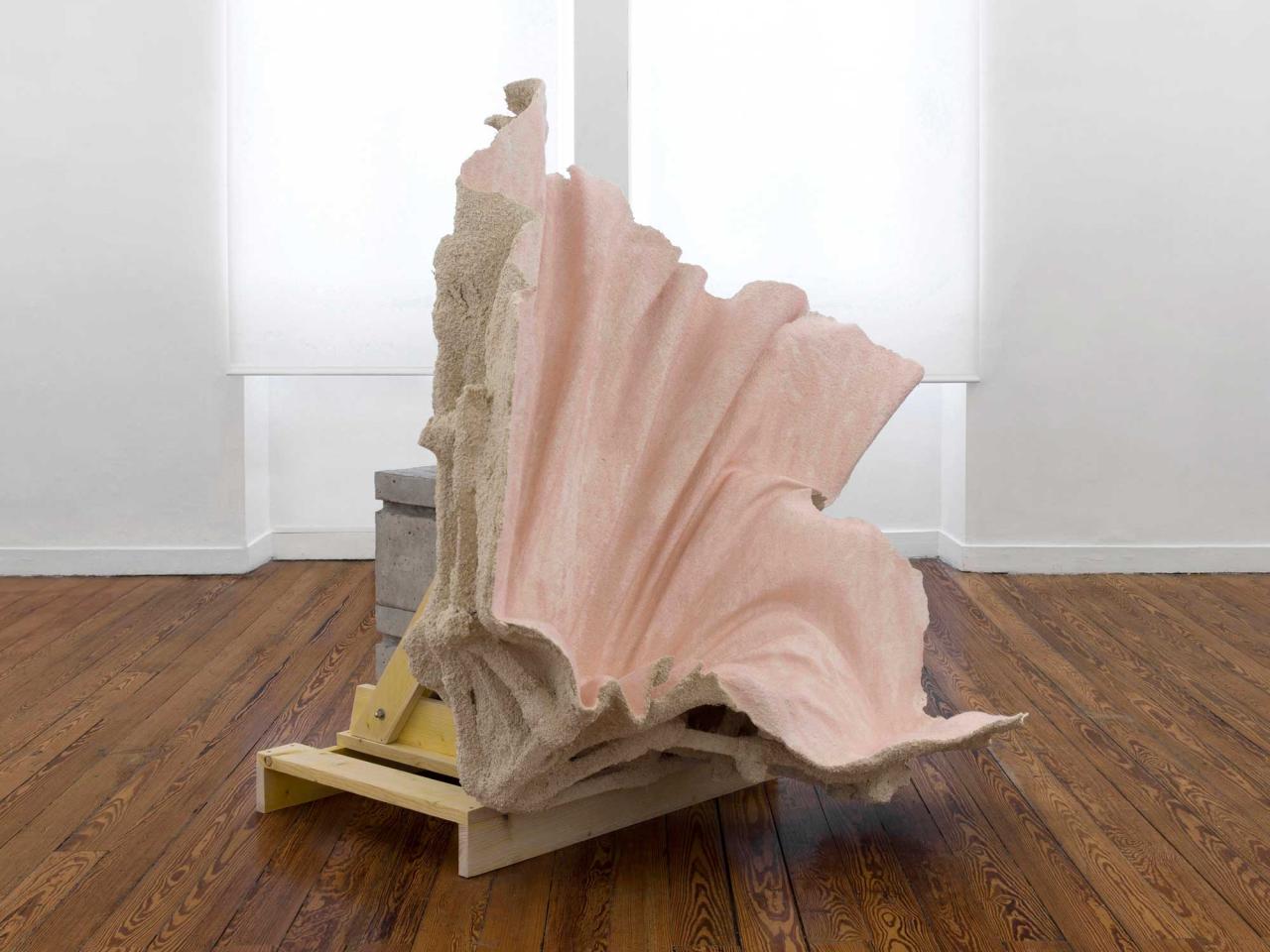
Plaster, wood, filasse, white cement, grey cement, sand, fibers, textiles, 160 x 127 x 145 cm. View of the exhibition "Les vacuoles de Vitruve", contemporary art center of Pontmain. Photo : Marc Domage.
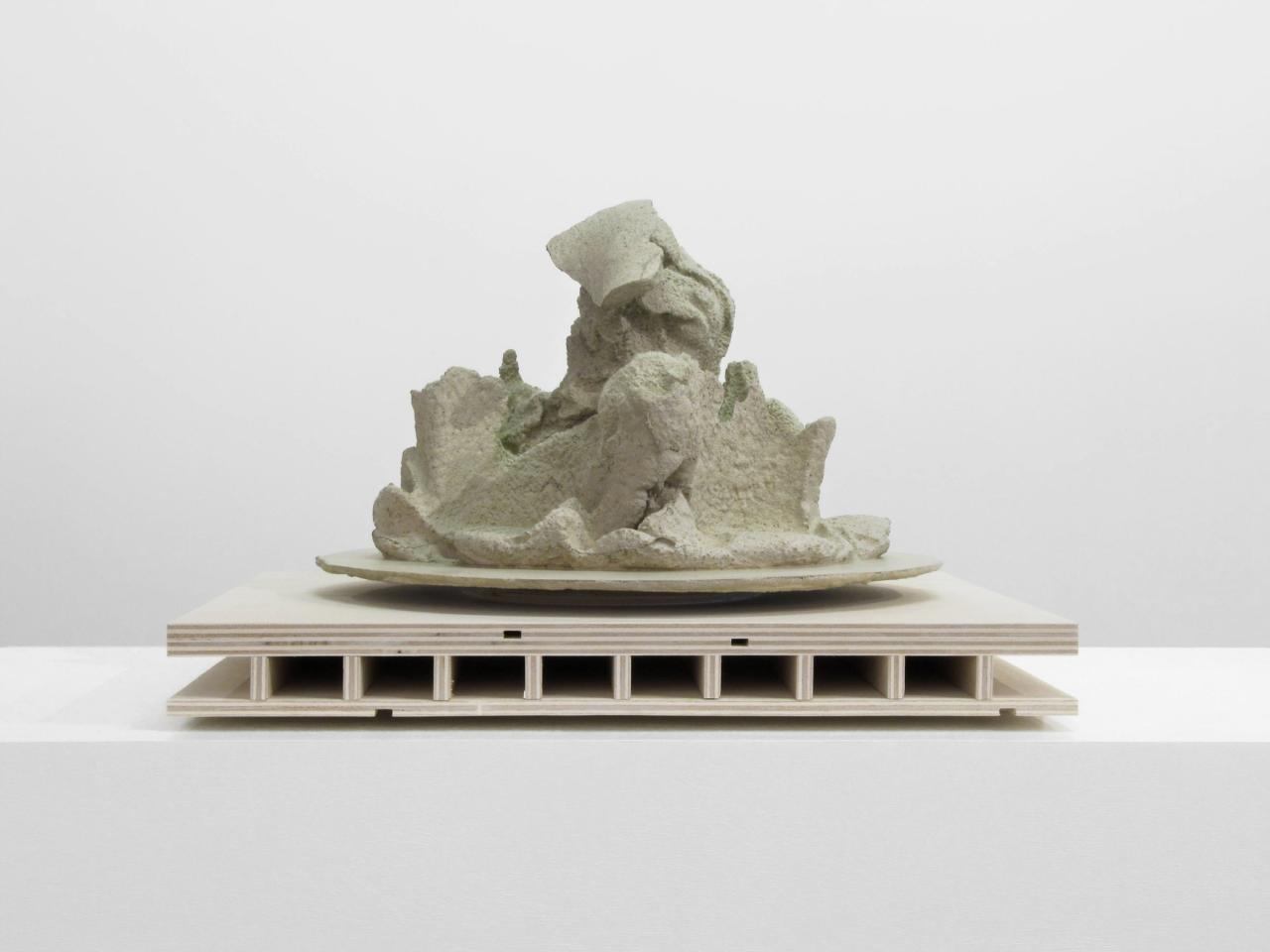
Cement, sand, pigments, Ø 40 cm, H 25 cm